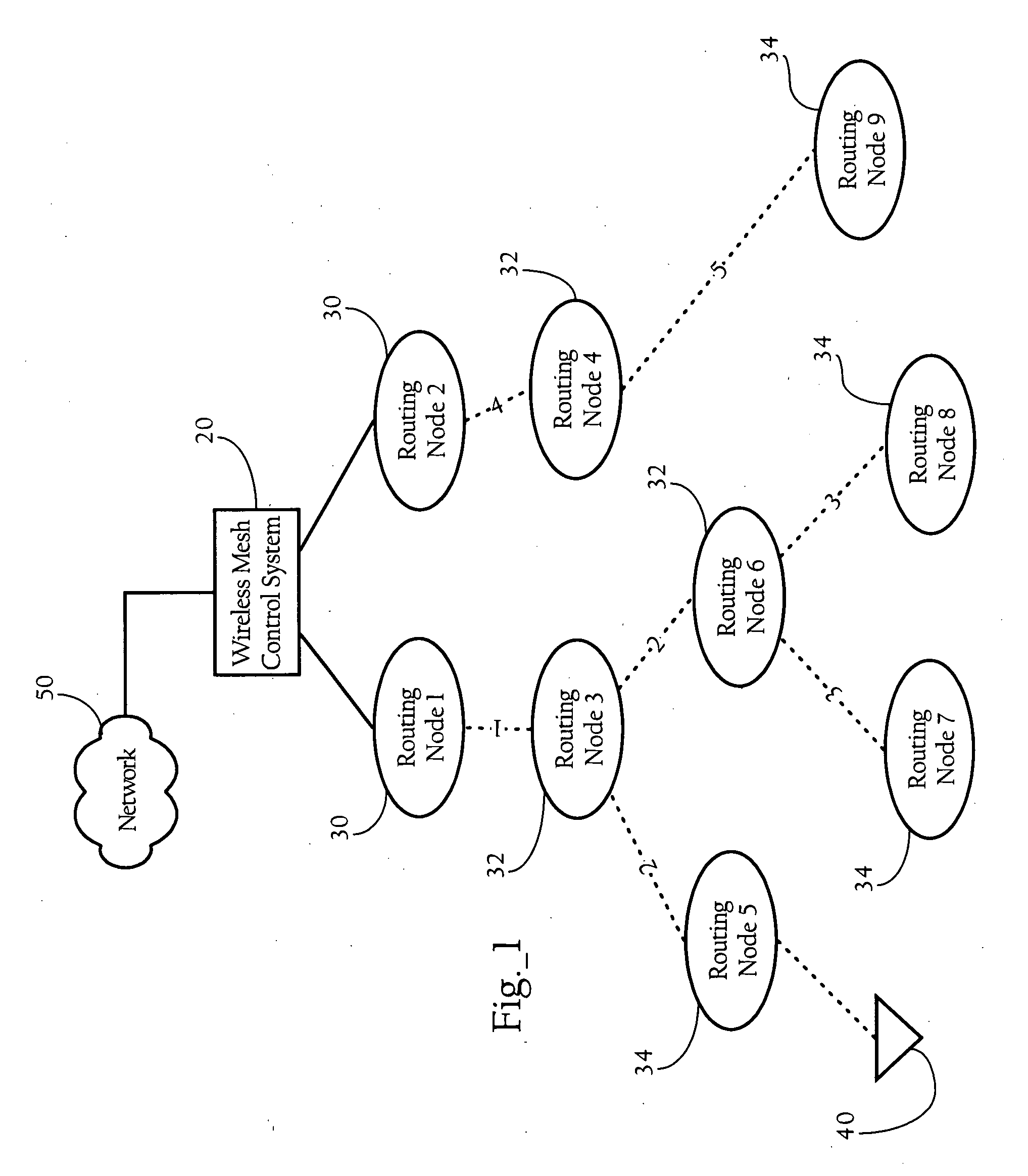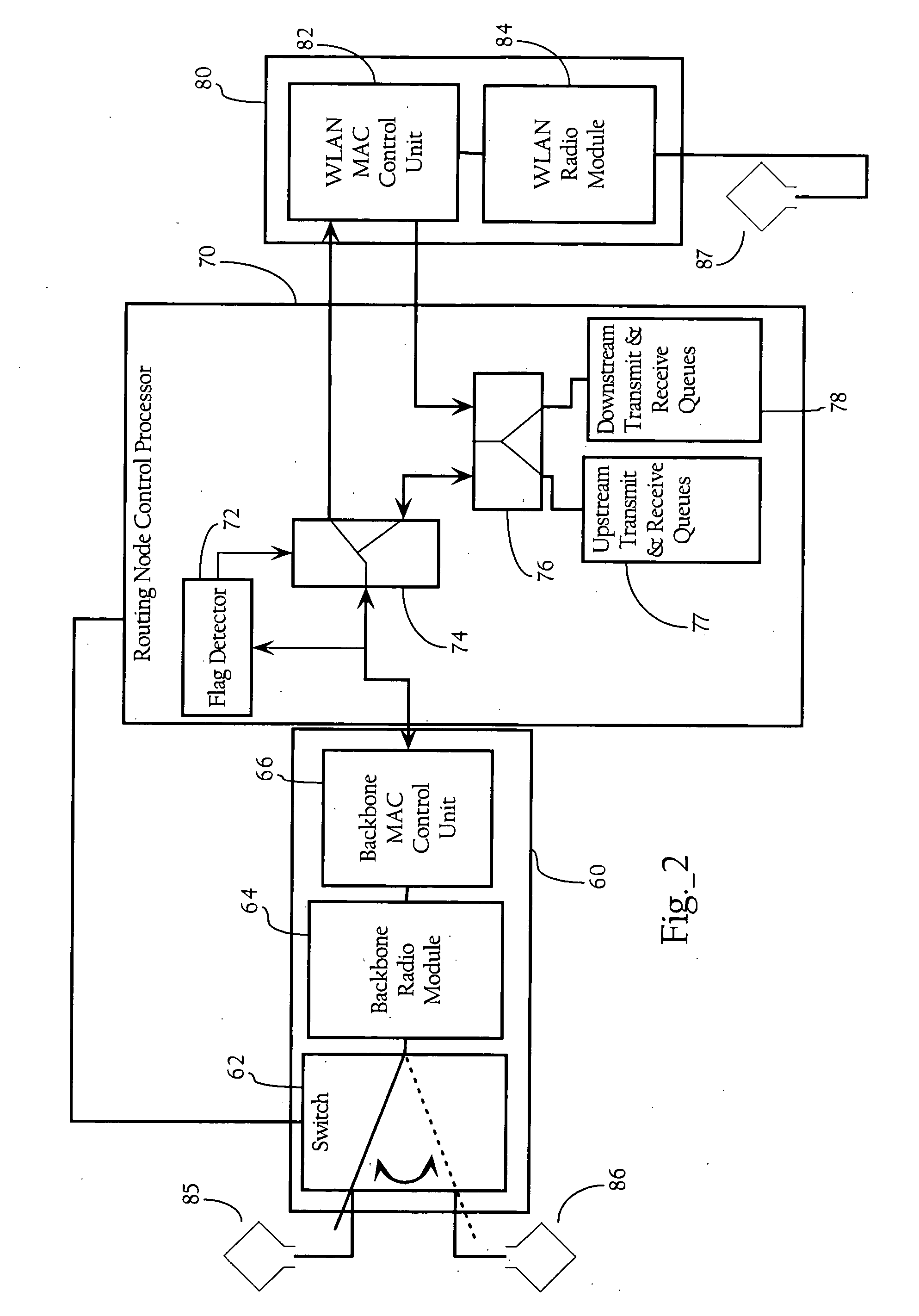Dynamic modification of contention-based transmission control parameters achieving load balancing scheme in wireless mesh networks
a wireless mesh network and transmission control technology, applied in the field of wireless networks, can solve problems such as performance degradation, limit of earlier-generation systems, and approach to wireless network performance degradation
- Summary
- Abstract
- Description
- Claims
- Application Information
AI Technical Summary
Problems solved by technology
Method used
Image
Examples
Embodiment Construction
A. Overview
[0019] The present invention provides methods, apparatuses, and systems directed to load balancing and bandwidth allocation in wireless mesh networks. Generally, according to one implementation of the present invention, routing nodes employ a contention-based media access scheme (such as the Carrier Sense Multiple Access with Collision Avoidance (CSMA / CA), and Enhanced Distributed Controlled Access (EDCA)) and self-allocate bandwidth within a hierarchical wireless mesh network by dynamically modifying one or more contention-based transmission control parameters (contention parameters). In one implementation, each routing node modifies its contention parameters associated with a given class of traffic (such as data traffic). The values of the contention-based transmission control parameters are based on hop count, where hop count is the number of hops from the instant routing node to the root node in the hierarchical wireless mesh network. Generally, routing nodes at highe...
PUM
 Login to View More
Login to View More Abstract
Description
Claims
Application Information
 Login to View More
Login to View More - R&D
- Intellectual Property
- Life Sciences
- Materials
- Tech Scout
- Unparalleled Data Quality
- Higher Quality Content
- 60% Fewer Hallucinations
Browse by: Latest US Patents, China's latest patents, Technical Efficacy Thesaurus, Application Domain, Technology Topic, Popular Technical Reports.
© 2025 PatSnap. All rights reserved.Legal|Privacy policy|Modern Slavery Act Transparency Statement|Sitemap|About US| Contact US: help@patsnap.com



